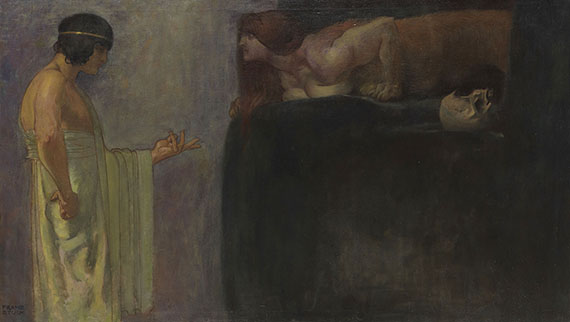Dictionary


Frederician Rococo
The term Frederician Rococo refers to a specific form of rococo, which developed in Prussia under the rule of Frederick the Great (reign 1740-86). The style, which was popular between 1740 and circa 1760, was characterised by a classical formal language, which incorporated baroque and rococo elements. Frederician Rococo was shaped by the architect and painter Wenzeslaus von Knobelsdorff (1699-1753), who worked in Berlin from 1740 as head intendant of the royal palaces and gardens. The style can thus be seen in its clearest and purest form in the Charlottenburg Palace in Berlin, and Potsdam Sanssouci. Another exponent of the style was the sculptor and ornamental artist Johann August Nahl (1710-81), who left Berlin unexpectedly in 1746. His successor as decorator of the Prussian palaces was Johann Christian Hoppenhaupt, whose style closely resembled that of his brother Johann Michael. It is often difficult to differentiate their work, which was characterised by the use of reduced, clearly separated ornament and in later years, was frequently completed by figurative motifs. The French artist Antoine Pesne (1683-1757), Frederick’s court painter in Berlin from 1710, was the leading artist of the period. His painterly and lifelike grasp of his subjects influenced many artists in Berlin, not only in the field of portraiture. Court sculptor was Friedrich Christian Glume (1714-52), and Johann Melchior Kambly (also: Kambli, 1718-83) from Zurich executed ornamental architectural decoration.
The term Frederician Rococo refers to a specific form of rococo, which developed in Prussia under the rule of Frederick the Great (reign 1740-86). The style, which was popular between 1740 and circa 1760, was characterised by a classical formal language, which incorporated baroque and rococo elements. Frederician Rococo was shaped by the architect and painter Wenzeslaus von Knobelsdorff (1699-1753), who worked in Berlin from 1740 as head intendant of the royal palaces and gardens. The style can thus be seen in its clearest and purest form in the Charlottenburg Palace in Berlin, and Potsdam Sanssouci. Another exponent of the style was the sculptor and ornamental artist Johann August Nahl (1710-81), who left Berlin unexpectedly in 1746. His successor as decorator of the Prussian palaces was Johann Christian Hoppenhaupt, whose style closely resembled that of his brother Johann Michael. It is often difficult to differentiate their work, which was characterised by the use of reduced, clearly separated ornament and in later years, was frequently completed by figurative motifs. The French artist Antoine Pesne (1683-1757), Frederick’s court painter in Berlin from 1710, was the leading artist of the period. His painterly and lifelike grasp of his subjects influenced many artists in Berlin, not only in the field of portraiture. Court sculptor was Friedrich Christian Glume (1714-52), and Johann Melchior Kambly (also: Kambli, 1718-83) from Zurich executed ornamental architectural decoration.
Offers




